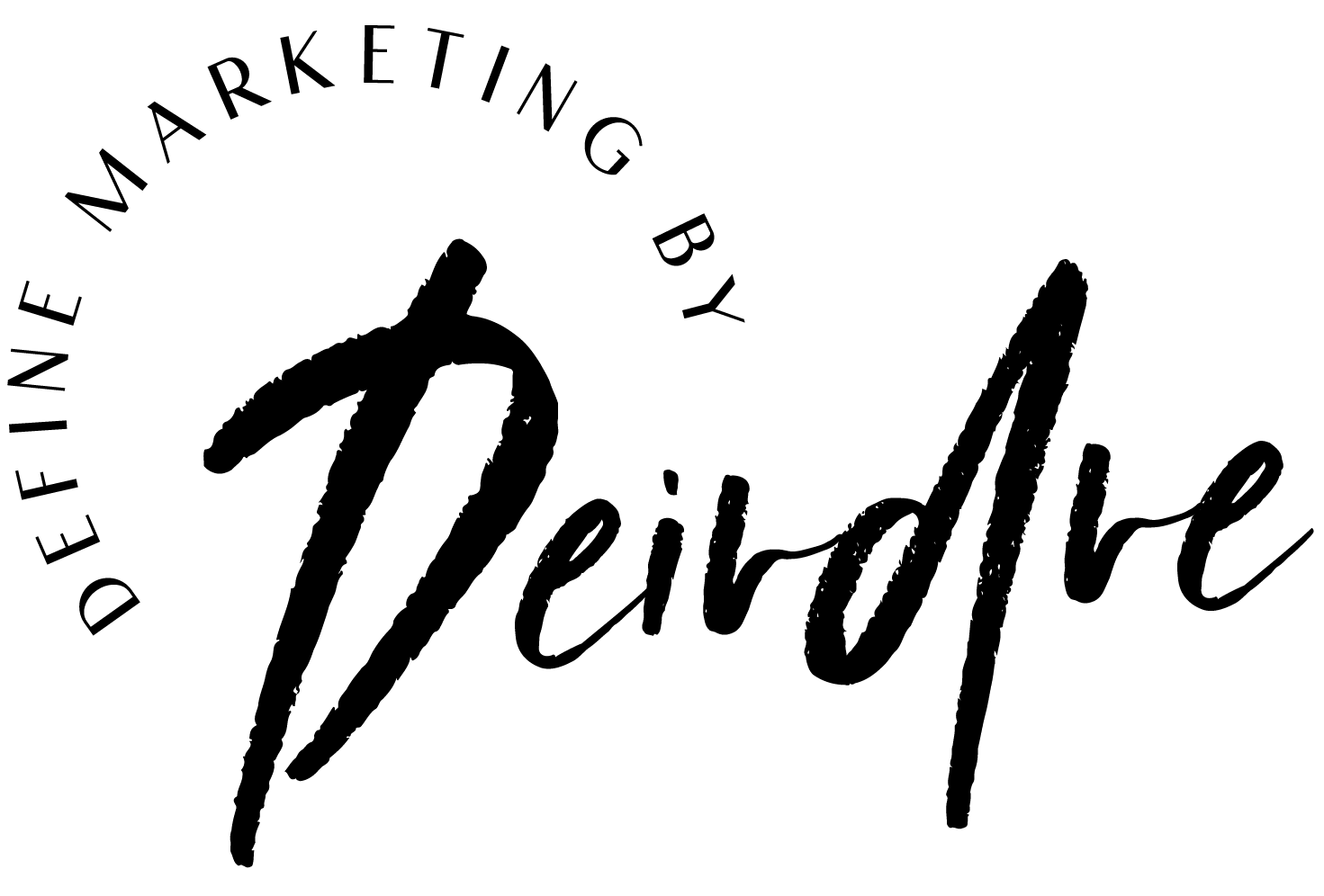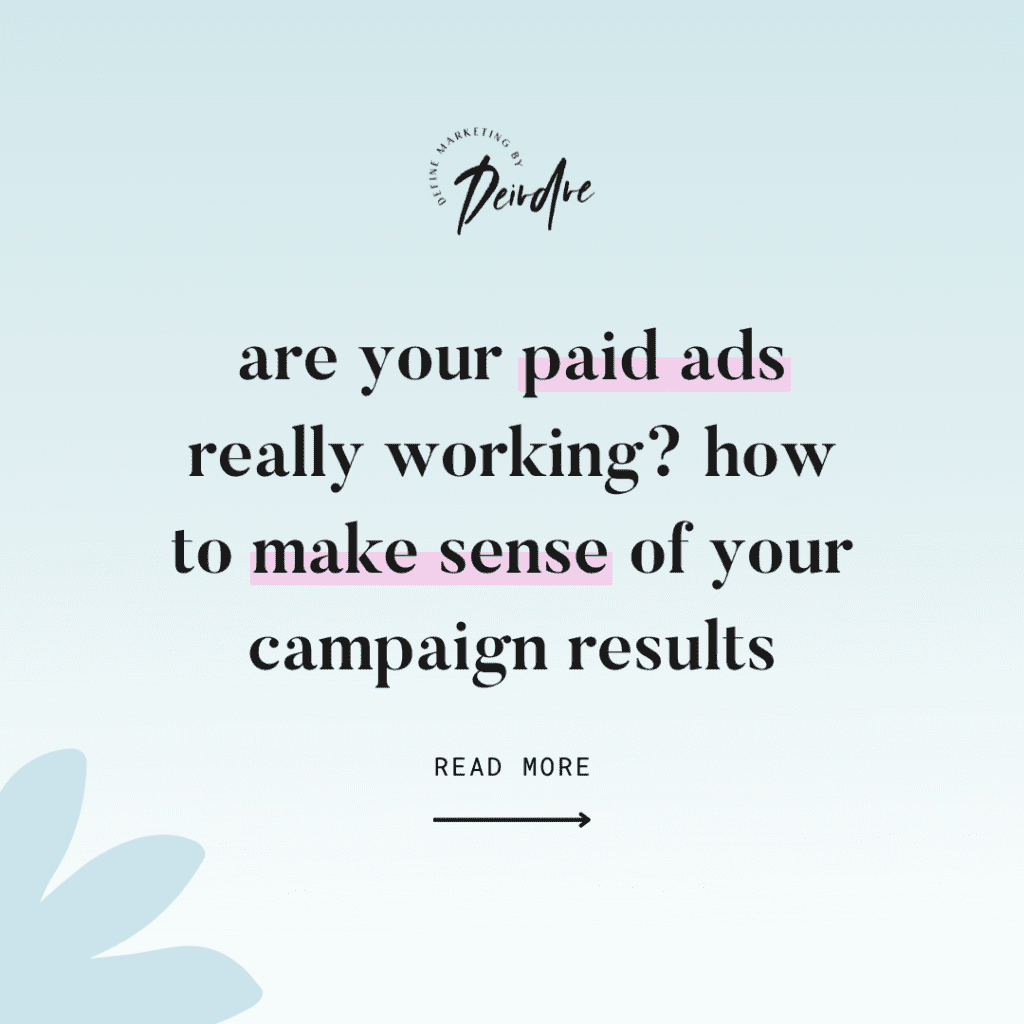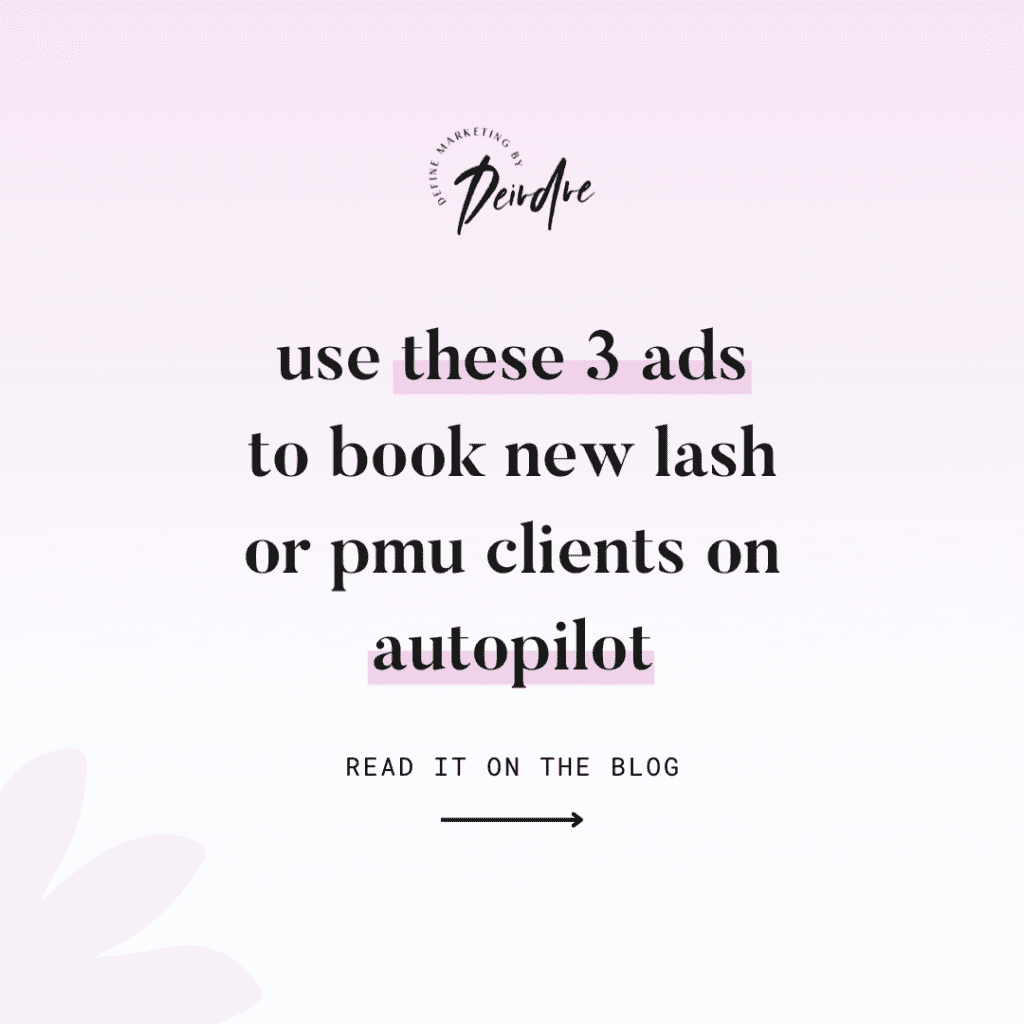As a digital strategist with a full service marketing agency, I’m frequently asked to put together media plans for new clients or new projects with little information to work with.
One of the first questions I always ask my team is, “What kind of budget will I have to work with?”
More often than not, my account managers will tell me that the client isn’t sure what they should be spending and that it’s up to me to put forth a recommended digital marketing budget.
Additionally, when meeting with clients to review reports and campaign metrics, I’m often asked what a “good” Cost per Click is, or how much money it will take to achieve their advertising goals.
Whether you’re a business owner trying to figure out how much to invest in a digital campaign or you’re a marketing consultant trying to manage your client’s expectations, it can be difficult to know what a realistic marketing budget should be, especially if you don’t have any previous data to look at for reference.
Does this dilemma ring any bells?
Luckily, I’ve got a few tricks up my sleeve to help you come up with a realistic marketing budget. Ready? Let’s do this!
Step 1: Start by Identifying a Quantifiable Campaign or Business Goal
Quantifiable is the key. It’s nice to be able to say that you want to increase brand awareness or, in the case of my family business, become the number one dance school in the city. But how do you measure that?
Well, let me tell you a little bit about my own personal business goals. If you’ve followed my blog for any length of time, you’ll know that my goal is to create and sell a comprehensive digital marketing course to help readers just like you. Obviously I’m not doing this solely out of the goodness of my heart; as much as I love to teach and want to make a difference, I need to make a living. In order to quit my day job and live off this business, I’ve determined that I need to sell 300 courses per year.
Step 2: Determine Your Conversion Rate i.e. How Many “Results” You Need to Reach Your Goal
I say “results” here because your result will of course differ depending on your goal.
In my case, I’m not likely going to sell a whole bunch of courses just by sending traffic to my product page — I need to build a relationship with my potential customers first. I’ve got to establish myself as credible, and my readers need to trust that I can offer them something of value. That’s why the “result” I’m after is a Lead or a Subscriber whom I can begin to nurture.
But how many Leads do I need to make a sale? My business is brand new, so I don’t have any historical conversion data to work with. Here’s where a little bit of guesswork comes in. A decent conversion rate in my case would be about 3% (it’s not an amazing conversion rate, but it’s healthy and at least realistic).
If I’m converting 3% of my leads, that means I need 10,000 subscribers to reach my goal of 200 sales.
Here’s the math:
(300 x 100) / 3 = 10,000
I know this is correct, because the reverse formula is also true:
10,000 x 0.03 = 300
Of course, if your business has been up and running for a while and you know, on average, how many inquiries or leads it takes to make a sale, use that as your conversion rate. Better yet, if you’ve got Google Analytics installed and conversion tracking set up, you’ll have even more accurate data to work with.
Step 3: Determine Your Maximum Cost per Result
How much does it cost to acquire a lead? And how do you know if you can afford it? This is where we need to determine your Maximum Cost per Result.
I’ll keep this formula as simple as possible, but I’ll follow up with a few examples AND a digital marketing calculator for you to download at the end of this post (just in case you need a bit of extra help to get the hang of it).
Calculate the Value of a Customer / Sale
It’s best if you can calculate the Lifetime Value of that customer (how much money you’ll make from them over the lifetime of your relationship, rather than just the value of a single sale). If you’re not sure of that number, or you only have one product like me, use the value of what you’re trying to sell.
In my case, I’m selling my course for $395. So that’s how much a customer is worth to me.
Subtract Your Cost of Goods Sold
If you’re selling a physical product, how much did it cost you to acquire that product from the source? If you made that product, how much did the materials cost you?
I’ve created a digital product using software I already own, so there’s no cost for the physical goods (lucky me!).
Here’s where I’m at so far:
$395 (Value of Sale) – $0.00 (Cost of Goods Sold) = $395
Subtract Your Overhead Costs
Overhead costs include your rent and utilities (if you own a brick and mortar store), your insurance, accounting fees, your taxes, etc. Add all of that up, and then divide by the number of sales you want to make (this gives you the overhead cost per sale).
Since I’m just starting out, my overhead costs are quite high. I’ve calculated my start up costs PLUS the taxes I’ll owe on 300 sales to be about $45,000 total (goddamn that’s a lot of money I don’t get to keep… shiiiiit).
So, if my goal is 300 sales and my overhead costs are $45,000 that puts me at $150 per sale.
Ok, here’s what I’ve got left:
$395 (Value of Sale) – $0.00 (Cost of Goods Sold) – $150 (Overhead Costs) = $249.
Subtract Your Desired Profit Margin
As a business owner, you know that there are a lot more than just overhead expenses and cost of goods sold. You’ll know best what the average margin is for your industry — for example I’ve read that restaurants on average only make about 3% (that sounds so depressing to me). I’ve got a digital product, so my expenses are far less. It’s reasonable for me to want to make a profit margin of 35%.
$395 x .35 = $138.25
That leaves me with:
$395 (Value of Sale) – $0.00 (Cost of Goods Sold) – $150 (Overhead Costs) – $138.25 (Profit Margin) = $106.75
$106.75 is how much I can afford to pay in order to acquire a customer.
Multiply your Maximum Cost per Customer by your Conversion Rate
We know that not every subscriber I acquire is going to become a customer. So, even though I can spend up to $106.75 to acquire a customer and still make money, I obviously can’t spend that much per lead. In fact, I’ve estimated that maybe only 3% of my leads might make a purchase.
In that case, I need to figure out how much I can pay per lead. Here’s the math:
$106.75 x .03 = $3.20
The maximum about I can spend on advertising per lead is $3.20.
Step 4: Multiple Your Cost per Result by How Many Results You Need
In Step 2 above, I determined that I need 10,000 leads (results) to achieve my goal of 300 sales, which was laid out in Step 1.
So, how much do I need to spend to achieve my goal?
10,000 Leads x $3.20 = $32,000. And there you have it! That’s my advertising budget for the year in order to achieve my goal. Of course, if I can bring in leads for less than $3.20 each, I’ll spend less than my budget. If I can increase my conversion rate, I’ll increase my profit margin.
These are the things we always need to keep in mind as business owners, digital strategists and marketing consultants. We always need to keep looking for ways to optimize our campaigns and to increase conversion rates for a lesser cost per result.
P.S. For the record, no way in hell do I actually have $32K to spend up front on advertising. Shit, I can’t even afford to fix the exhaust that’s practically hanging off my rusty old Corolla. Pretty much any sales I make once I launch my course will go right back into paying for advertising and leads.
But What if You’re a Marketing Consultant and You Don’t Know Your Client’s Overhead Costs?
The formula I’ve laid out above works best for business owners or those directly involved in selling a product. But as a marketing consultant or digital strategist, you often just don’t have access to that kind of information.
If this is the case, the best thing you can do is find out from your client what their average conversion rate or closing rate is and how much they expect to make from a sale.
If their goal is to drive leads through a website form, ask them, “How many inquiries does it take for you to make a sale? And what is the average value of that sale?”
Take those numbers and use the above formula, making educated guesses for data you don’t have. If you don’t know the cost of goods sold, just use $0.00. If you don’t know the overhead costs, go with a default of 50%. If you don’t know the desired profit margin, estimate 10%.
It can be frustrating when clients don’t know what their overhead costs or profit margins are because, as a marketing consultant, you need to be as informed as possible to build a successful campaign. But remember, it’s not your job to teach someone how to run their business. So, just do the best you can with the information you’ve got.
If you still need some time to absorb this concept, I’ve also included a few more examples below. Or if you’re lazy you can just watch the video I’ve put together for my Google Ads Master Class.
Other Scenarios for Determining a Digital Marketing Budget
Please forgive me, but I’m going to take you back in time to 3rd grade math class and give you a few problems. You know the type…
“Mary has five apples. If Mary eats one apple and gives one apple to her friend, how many apples does Mary have left?”
Yeah. Those math problems always sounded so lame, didn’t they? But it’s true that we need to learn how to apply math skills in different scenarios. Especially as a digital marketing strategist, because not every campaign is the same.
So, let’s go over a few different scenarios and work together to come up a realistic advertising budget for each case.
Scenario #1
John is a commercial real estate developer. His company has just built a brand new luxury apartment building and his goal is to rent out all 200 apartment units. John wants to know how much money he should spend on a Google AdWords campaign to achieve this goal.
His team has set up a beautiful, mobile-friendly landing page that includes floor plans and a virtual video tour. The website includes a form for people to fill out to request a tour in person.
You’ve installed Google Analytics on the website and you can see that about 5% of site visitors fill out the form. The leasing agent says that about 10% of the inquiries who come in for a tour will actually sign a lease.
We don’t know the overhead costs or the profit margin, but we do know the conversion rates and we know that, on average, we might spend $2 per click on a Paid Search campaign.
How many clicks do we need to rent out 200 units? And how much will we need to spend?
Let’s do the math.
(200 Units x 100) / 10% Closing Rate = 2,000 Website Leads
(2000 Leads x 100) / 5% Website Conversion Rate = 40,000 Website Visits (Clicks)
40,000 Site Visits x $2 per Click = $80,000
This seems like a lot of money, right? But remember, if John rents out 200 units at $1,200 per month, the building is bringing in $2.88 Million a year. We don’t know John’s expenses, but the advertising budget we’ve put forward is less than 3% of his gross revenue.
Scenario #2
Lyndon and Kali (that’s my brother and his wife) own a dance studio. They’ve created an exciting new summer day camp program and they want to bring in 100 new students.
People can register and pay directly online for their spot in the camp. I’ve installed Google Analytics, so I can see that only about 1.5% of visitors to the program page actually sign up.
If they’re running a Facebook Web Traffic campaign that averages $1.20 per click, how many clicks do they need to get 100 new students and how much will it cost?
(100 Students x 100) / 1.5% Sign Up Rate = 6,666 Website Visits (Clicks)
6,666 Website Visits x $1.20 per Click = $8,000
Now, $8,000 is definitely a lot of money to spend just to get 100 registrations. But what if they work hard to optimize their web traffic campaign? They might be able to get their Cost per Click down to $0.90. In that case, they would only need to spend $6,000. That sounds a little more reasonable, doesn’t it?
Or what if they were able to increase the conversion rate on their website? If they could convert 3% of visitors instead of just 1.5%, they’d only need 3,333 visits. Even at $1.20 per click, that’s only $4,000. They could cut their ad budget in half!
So, there you have it! Now you know how to come up with a realistic, strategically thought-out digital marketing budget for yourself or for your next client. Now, don’t forget to download your budget calculator!






